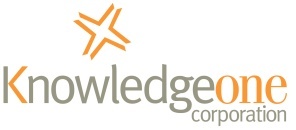Knowledgebase & FAQ
Tips on Testing Knowledgeone K1 Before Upgrading From RecFind
Overview
Because Knowledgeone K1 does not overwrite the RecFind database(s) the testing of Knowledgeone K1 is a much simpler proposition that at first envisioned.
This is because you can convert your current RecFind system to Knowledgeone K1 and then do parallel testing, using RecFind as the benchmark.
Step 1
-
List the Methods you use in RecFind, e.g., Add, Modify, Clone, Portable Barcode reader audit, etc.
-
List the Objects you use in RecFind, e.g., File Folders, Boxes, Document profiles, etc.
-
List the 'Functions' you use in RecFind, e.g., File folder maintenance and tracking, Box management and tracking, Retention, Imaging, etc
The objective being to 'know' exactly what it is you do in RecFind before you begin testing.
Step 2
Install Knowledgeone K1
-
Back up the initial Knowledgeone K1 database BEFORE running the conversion program or using the DRM (Database Registration Module) - this is so you can repeat this process as many times as is needed by restoring the empty Knowledgeone K1 database before each test.
-
Run the RecFind2K1 conversion program, convert all databases.
-
Read the Knowledgeone K1 Help Screens topics on the RecFind to Knowledgeone K1 conversion, (the topic is called "RecFind 5.0 Conversion"), try to understand how each object is converted to Knowledgeone K1. Remember that RecFind and Knowledgeone K1 are totally, absolutely different. Start with the "Welcome" topic and then navigate to the "Where do I begin" topic and read on from there.
Note: As this is only a test you continue to use RecFind for production. When you convert to Knowledgeone K1 it does not change the RecFind database in any way.
Step 3
Read the Knowledgeone K1 Help System and research how to do what you do in RecFind. All the information you need is contained within the Knowledgeone K1 Help system.
Step 4
Build a test plan based on methods, objects and functions. That is, all the things you do in RecFind.
Step 5
Perform an operation in RecFind and then duplicate the same operation in
Knowledgeone K1. Examine and compare the results and update the test plan. For
example, Add a file folder, Modify a File folder, Request (resubmit in RecFind parlance) a File folder, Move a File Folder, do a portable
barcode reader audit, etc, etc. Each time, compare the RecFind operation
to the Knowledgeone K1 operation.
Tips
-
Knowledgeone K1 doesn't look like RecFind and doesn't work like RecFind so you need a major change of mindset when reviewing how Knowledgeone K1 meets your needs. Do not expect it to work like RecFind. Expect it to work completely differently and expect it to look and feel nothing like RecFind.
-
The Knowledgeone K1 helps screens are your bible, much more so than the RecFind help screens. Get used to referring to them; everything you need to know is included.
-
When we convert from RecFind we convert multiple databases to a single database but with Type Codes (e.g., "File Folder - Standard") differentiating the records from different RecFind databases.
-
RecFind has 4 profiles (File, Document, Attachment and Box), Knowledgeone K1 has just 1, the MetadataProfile (MDP). Different types of records are 'Configured by Type Code' in Knowledgeone K1 so you have different views of the MDP record depending upon what you are working with (e.g., Files, Documents or boxes).
-
All electronic documents and images are stored in Knowledgeone K1 in the EDOC table. All are stored as 'Blobs' (Binary Large Objects). Unlike RecFind, an EDOC can 'standalone' in K1 and does not have to be 'attached' to a document profile (MDP).
-
Unlike RecFind, Knowledgeone K1 has very few embedded rules. This is because with K1 we don't really know what you are going to use it for and because you can create any rule you want. For example, you decide which fields are mandatory using the DRM. In Knowledgeone K1 almost everything is changeable by you - you need to start thinking this way. Basically, if you don't like it, then change it!
-
Please refer to my paper on Modifying the Knowledgeone K1 Data Model. Read it and then understand the thought processes required when working with Knowledgeone K1. Please pay special attention to the chapter on Security.
